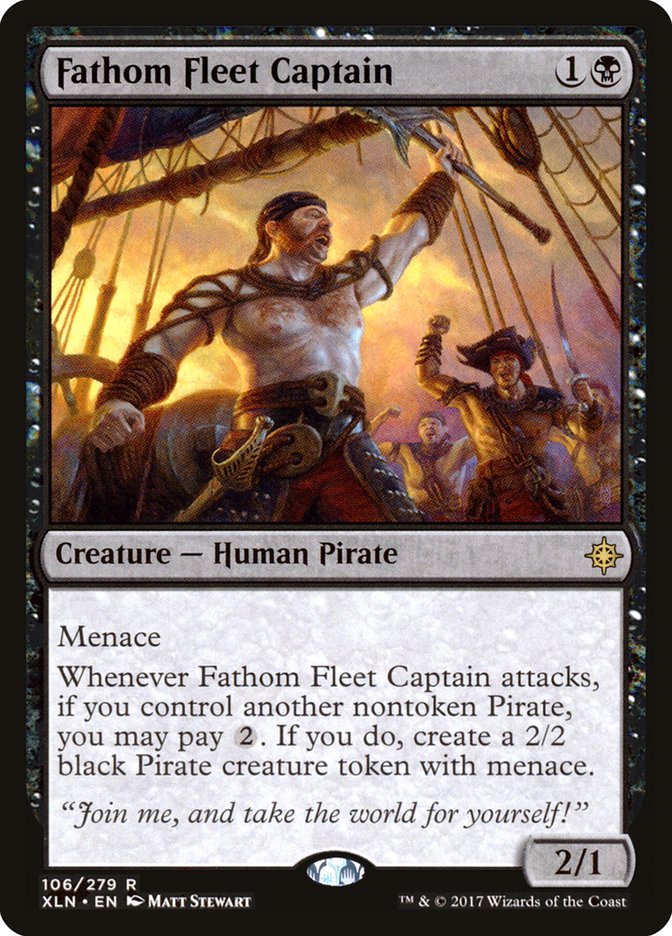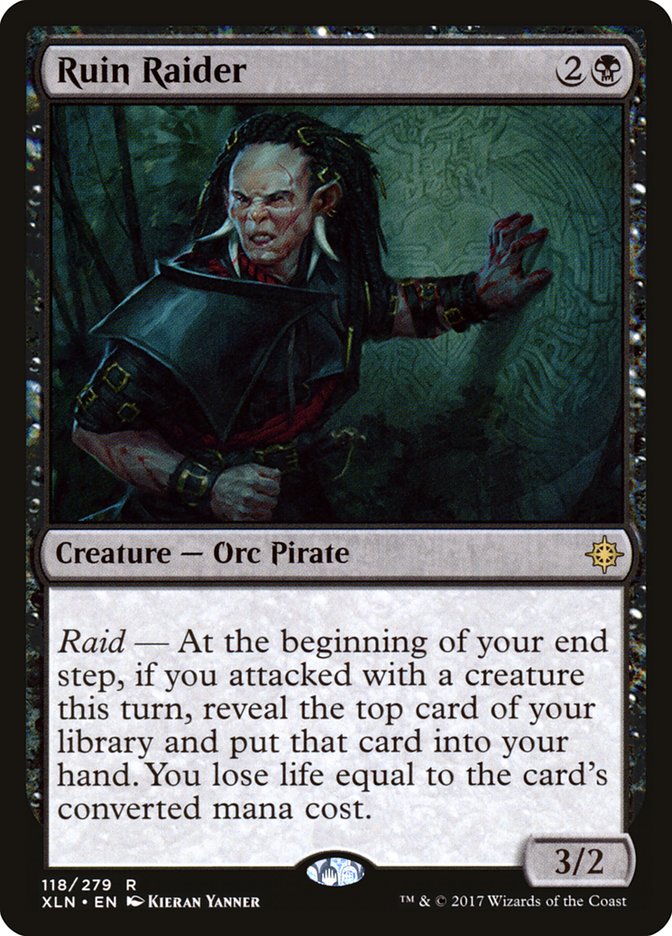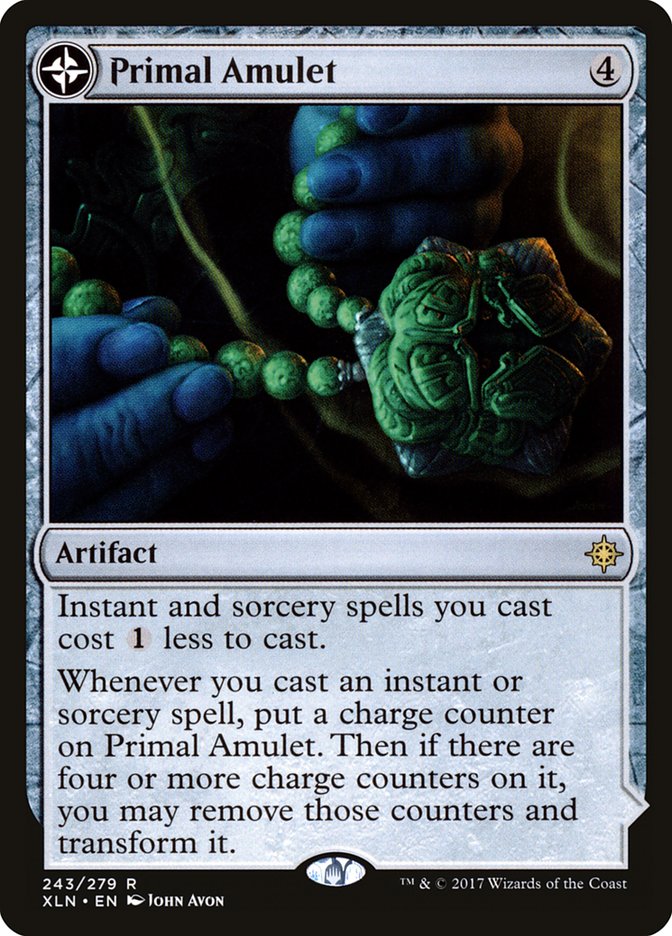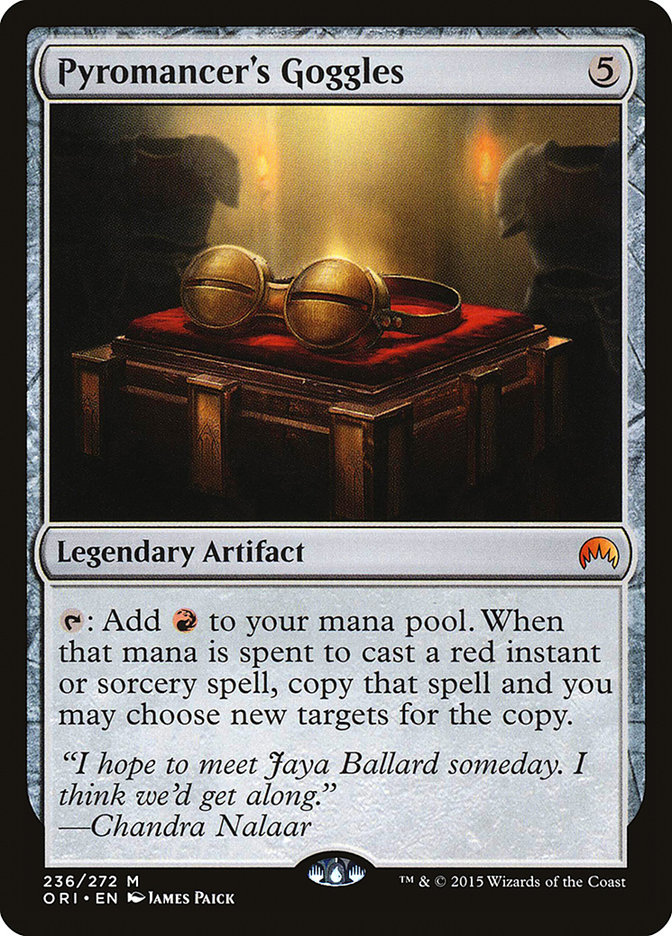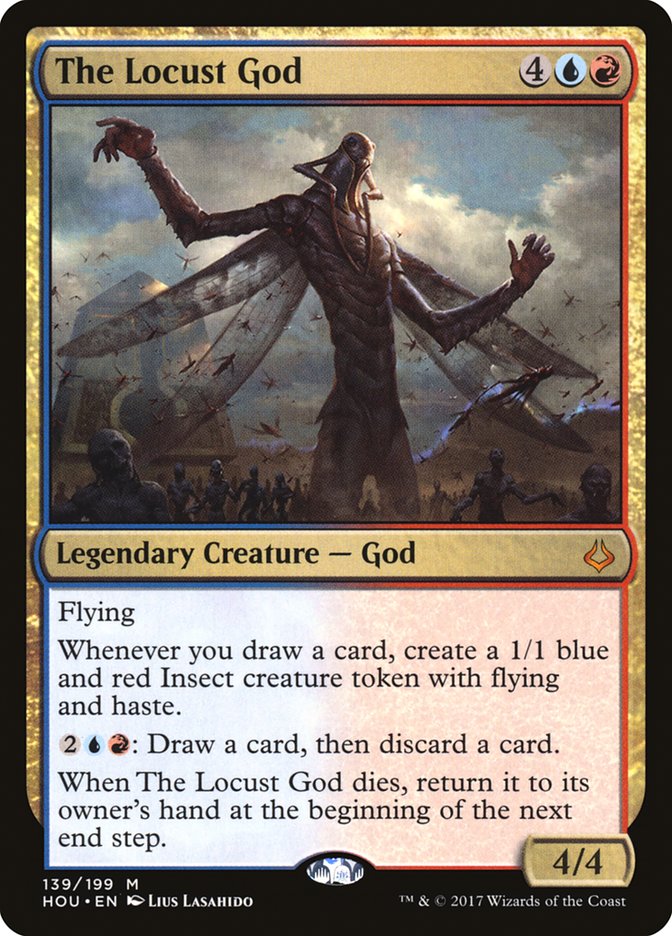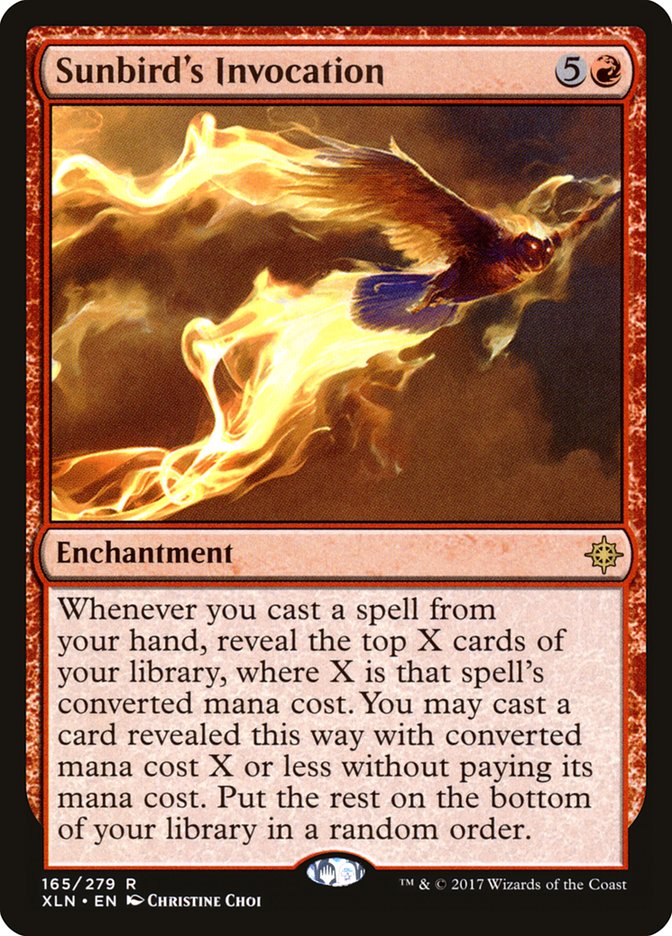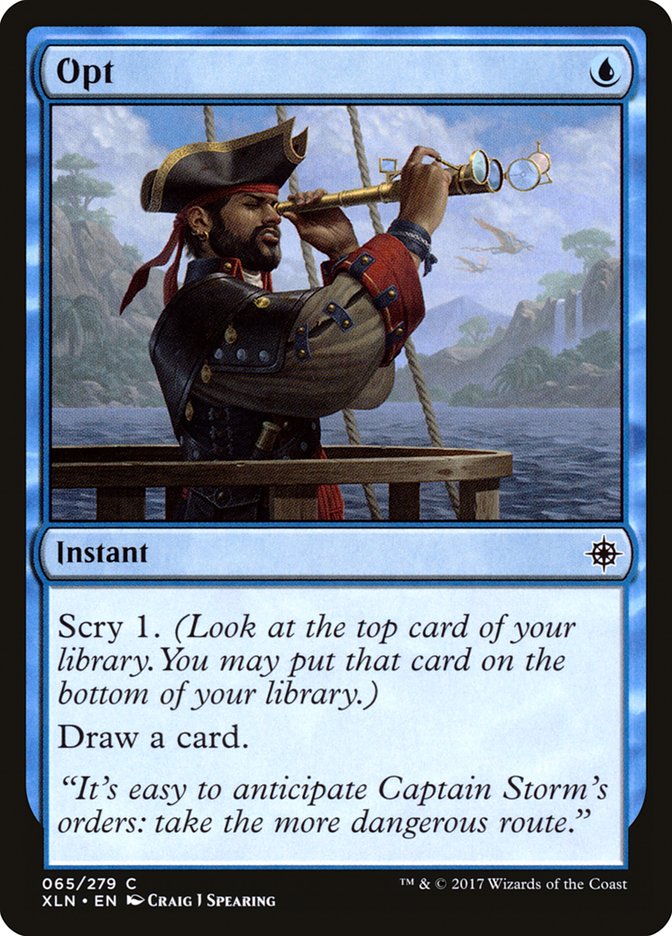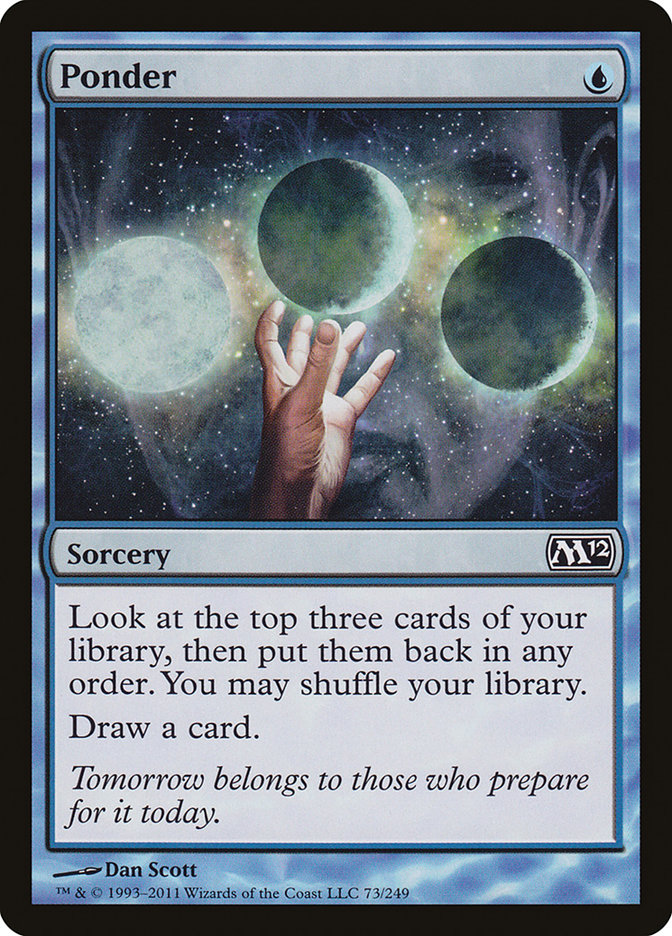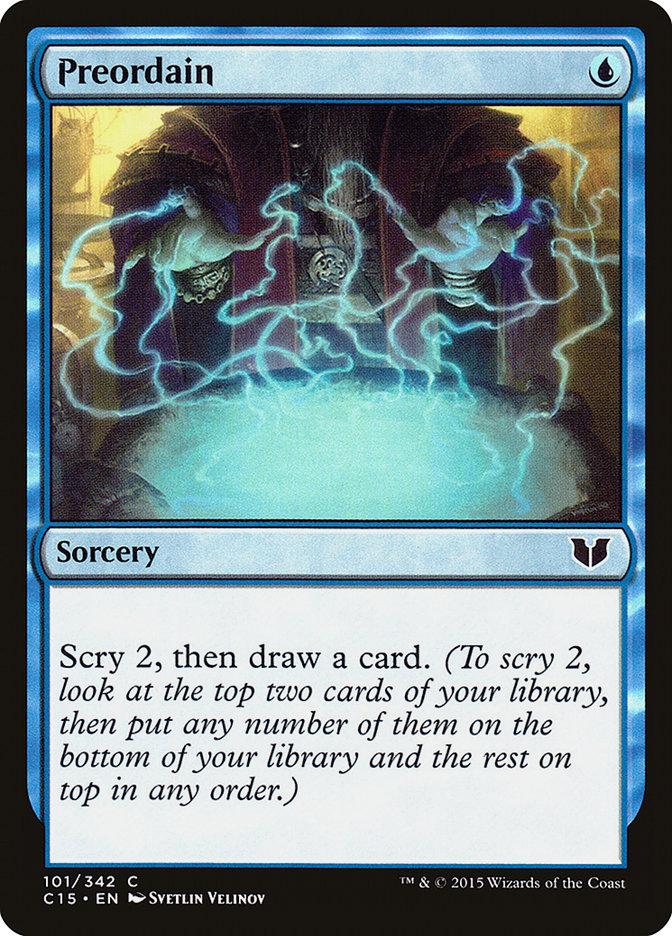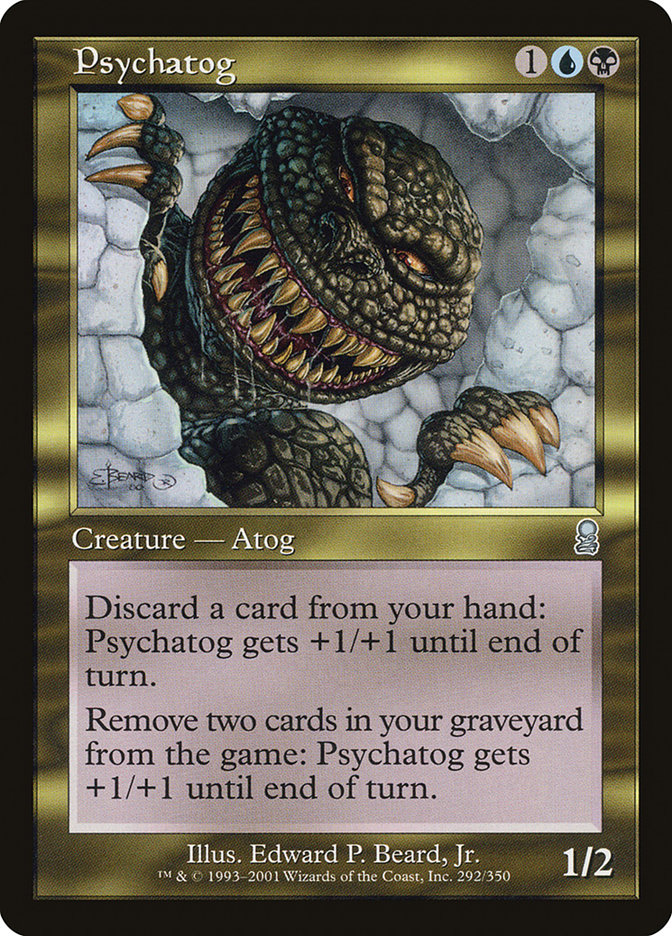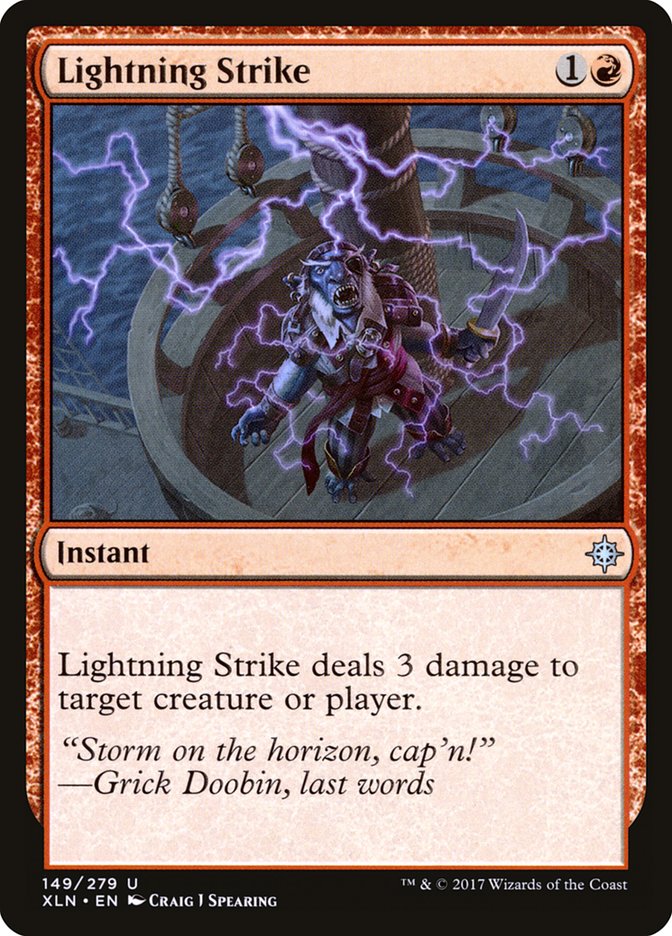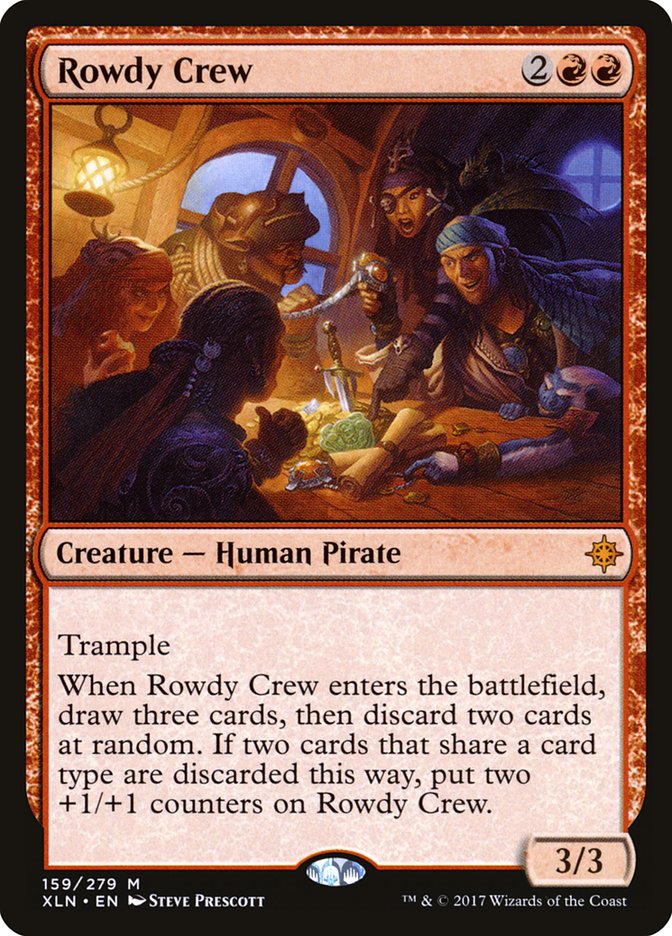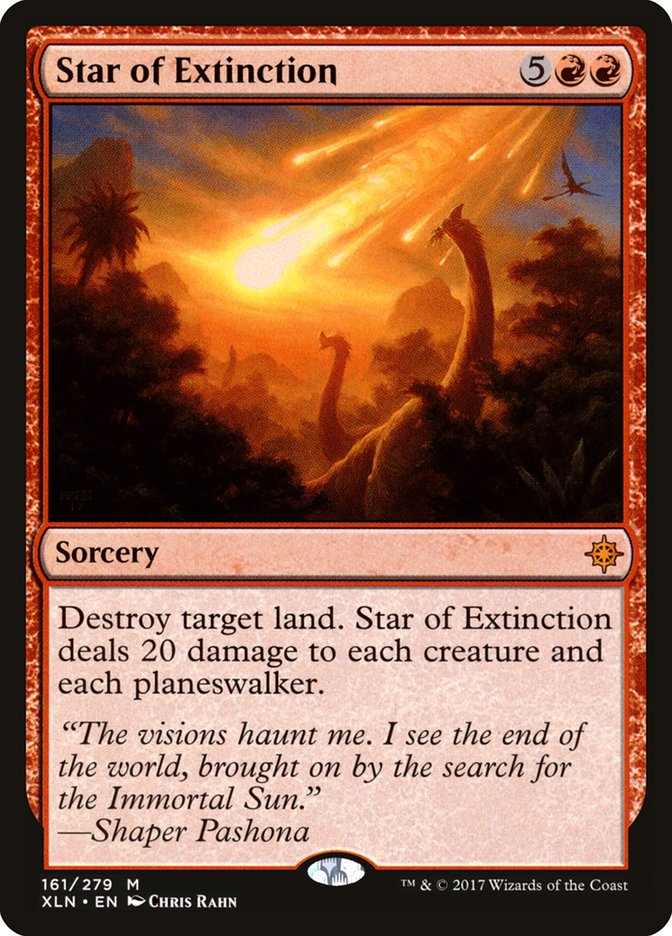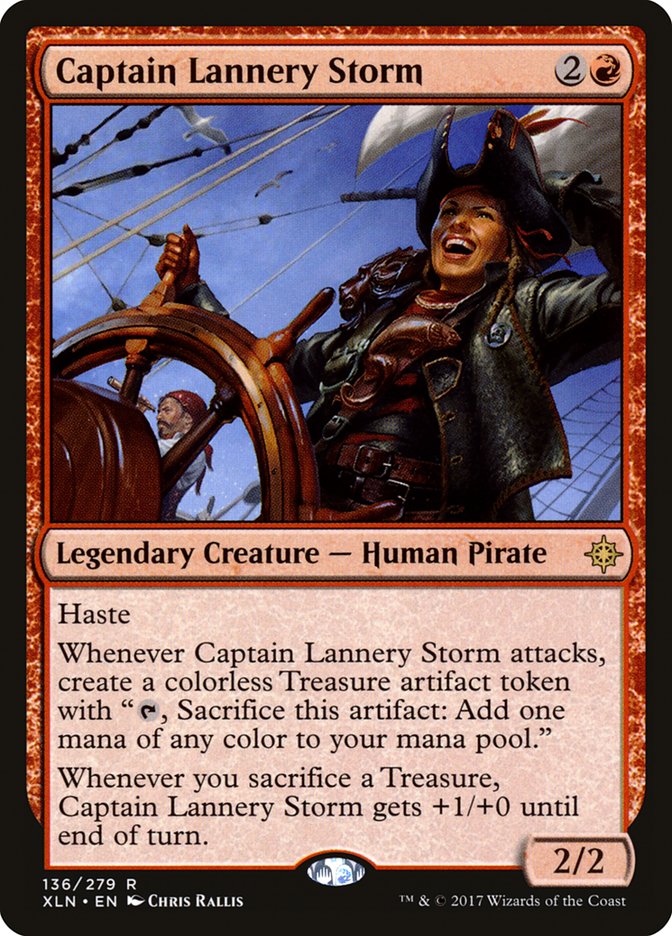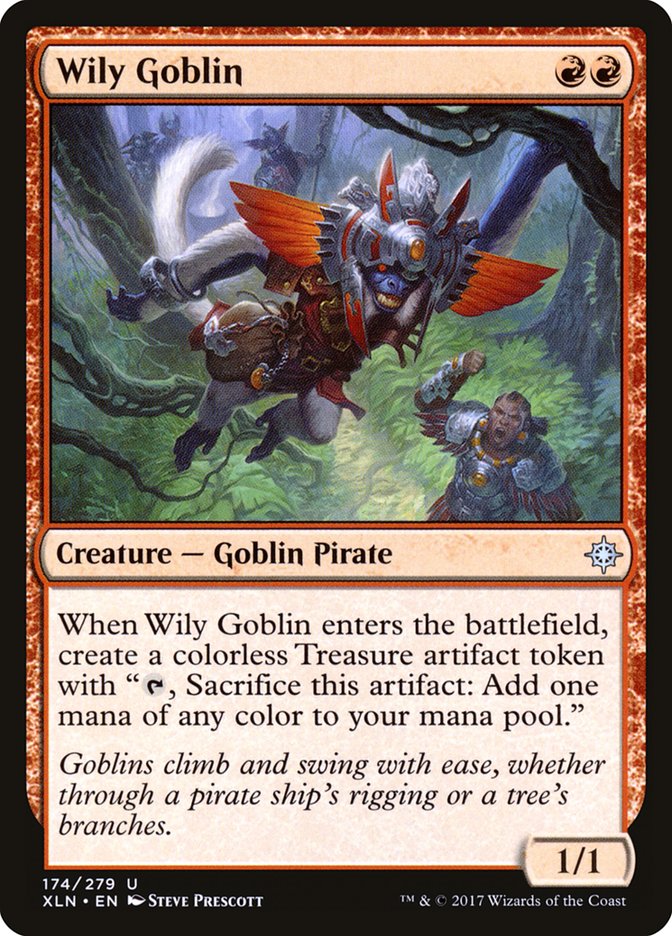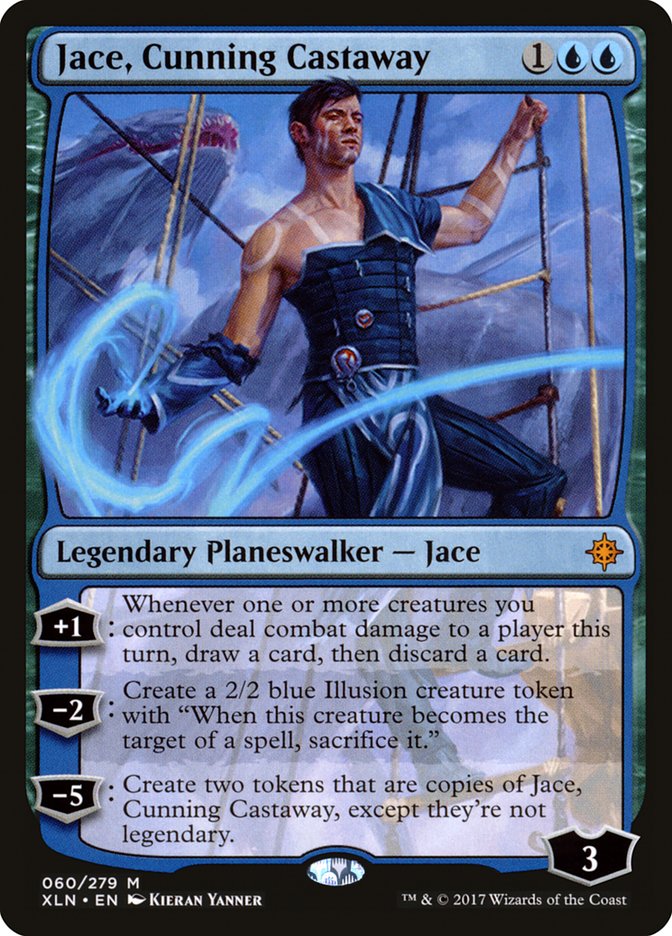Previews for Ixalan are coming in swiftly, and trying to build
decks around new cards (and reprints) is proving to be challenging. The
previous year of Standard cards has given us a lot of powerful, proactive
spells and solid manabases to build around, which in turn leads to some
established archetypes that will take a lot to be dethroned. Decks like
Ramunap Red, Mardu Vehicles, God-Pharaoh’s Gift, and Temur Energy didn’t
lose much in the rotation, which says a lot when determining the power
level of the current Standard format, even with Battle for Zendikar and Shadows over Innistrad making a
hasty retreat.
So what exactly does Ixalan need to give us to make it viable in
the new Standard metagame? Like in some previous Standard formats that
revolved around block-centered mechanics (think Affinity and Devotion), we
are now staring down Energy and artifact cards as established decks, with a
hyper-aggressive aggro strategy and a graveyard recursion deck to boot. In
order for Ixalan to successfully breach Standard, it’s going to
need cards that scream “Build around me!” Otherwise, the
already-established decks are just going to pick and choose a few cards to
add to their sideboards, and no one’s going to be riding Dinosaurs or
playing Pirate Tribal.
The good news is that we already have a few cool Pirate-based cards that
might be fuel enough for some sort of black-based Pirate strategy.
Yes, I know these aren’t blue or red cards, but we’ll get to those shortly.
Now, I’ve already heart a good amount of buzz about Ruin Raider. After all,
if your deck is full of cheap Pirates, the ease at which you trigger is
staggering. To boot, Ruin Raider doesn’t even need a Pirate to attack in
order to trigger its ability, meaning it could easily fit into any
aggressive black-based strategy. My fear with the tribal synergies
previewed thus far is two-fold:
1) Vampires and Pirates will cannibalize each other, because they share
black as a primary color.
2) The tribal synergies (lord pump effects, easy triggers, rewards for
playing tribal) will not be good enough to warrant building your deck
around it.
What the Pirate Deck Needs
As of writing this, I don’t have the entire picture when it comes to
building around these mechanics. The entire set will have to be released
before we’re sure about whether or not a deck like Pirate Tribal can exist.
In order for it to exist, we’ll need a few good one-drop creatures,
somewhere between eight and twelve two-drops, and a solid number of
higher-cost Pirates as payoff cards. We’ve had this type of build in the
recent past with Zombies, but also decks like Mono-Blue Devotion. In those
archetypes, it took people a few weeks to realize cards like Frostburn
Weird and Nightveil Specter were playable, but when you have a payoff card
as good as Master of Waves, playing weaker enablers tends to make a lot
more sense.
Also not technically a blue or red card, but come on. This is a gimme.
Aside from the tribal elements of Ixalan, we’re also getting a new
take on the transform mechanic. All transform cards turn into a land with
awesome abilities, and I will say that I’m absolutely loving this design.
Lands are pretty tough to deal with, so the ease at which you’re
transforming the cards is the more important aspect of how good these cards
will be. Primal Amulet takes a lot of effort to transform, but the payoff
is very similar to one of my favorite cards in the last three years:
Pyromancer’s Goggles.
Since I first saw this card, I can’t stop thinking about it. My hopes and
dreams will probably be shattered by Abrade showing up in every deck, but
for now I’d like to take a few moments and brew up a deck trying to push
this card to the limit.
Creatures (2)
Lands (25)
Spells (33)
- 4 Harnessed Lightning
- 4 Confiscation Coup
- 4 Glimmer of Genius
- 2 Sweltering Suns
- 4 Abrade
- 4 Supreme Will
- 4 Hazoret's Undying Fury
- 3 Hour of Devastation
- 4 Primal Amulet
Sideboard

Now, I’ve thought a lot about this deck and how it’s supposed to play out
games. You have quite a few haymaker cards that can catch you back up after
spending an entire turn to cast Primal Amulet. The trick to this strategy
is trying to make the most out of Hazoret’s Undying Fury, which is a
potential dud but fits the overall theme of the deck. Not only is Hazoret’s
Undying Fury a busted card when copied, it can singlehandedly trigger
Primal Amulet the turn you cast it. Obviously, you’ll be tapped out on the
next turn, but the tempo and card boost gained from both casting Hazoret’s
Undying Fury and flipping Primal Amulet should be able to catch you back up
if you fall behind.
My only wish for the coming previews is a better win condition than The
Locust God. Fall of the Titans was a beautiful find when I was building the
Pyromancer’s Goggles deck, acting as both a sweeper effect and win
condition. And, if I’m being honest, that deck is likely miles better than
what we’re working with now. Without early threats like Thing in the Ice
and Jace, Vryn’s Prodigy that can take over the game, we’re stuck relying
on removal to buy us time until we can get our engines running. And, if our
opponent is able to destroy that engine, our deck might not function very
well at all.
The thing about Pyromancer’s Goggles was that people weren’t maindecking
artifact removal. Instead, they were focused on beating decks like
Collected Company, which gave us a bit of breathing room until their
sideboard answers could come into play. And, if they were too focused on
killing Pyromancer’s Goggles, we could use Thing in the Ice as an alternate
win condition.
Without a lot of burn spells that target the opponent to copy with Primal
Spring, we’re left relying on a fairly weak creature to do most of the
heavy lifting. While Confiscation Coup could potentially steal games, I’m
pretty worried that those win conditions might not be enough. Sure, we can
draw a ton of cards and sweep the battlefield with impunity, but how are we
going to actually win the game if our opponent is able to deal with The
Locust God? I’d really like to see the rest of the set before I go all-in
on this archetype, but my gut is telling me there’s something here.
Much like Primal Amulet, this feels like a build-around-me spell that is
probably too expensive. I do love the fact that it is an enchantment and
not an artifact, which makes it much more difficult to destroy. My gut
tells me that this card would be great in a ramp strategy, but it might
take too much time to set up. Spending six mana to invest in a card like
this without an immediate payoff is asking a lot.
Maybe I have a “thing” for do-nothing permanents that can ultimately take
over the game, but that’s just who I am. I’m embracing it, like Brad Nelson
with his dopey green midrange creatures.
Spell Pierce is one heck of a Magic card, and one that I’m not so sure
should be making a return to Standard. With the premier control deck
relying on Glimmer of Genius as a primary means of functionality, Spell
Pierce could give a number of decks a cheap way to obliterate the opponent.
While Spell Pierce isn’t all that great in a control deck, it tends to
shine in archetypes like Merfolk, which just so happens to be making a
comeback. But again, we don’t have all the information just yet, so it is
impossible to build a deck featuring Spell Pierce as a primary tool of
protection, but suffice it to say that Spell Pierce was a key reason
CawBlade was able to rule with impunity. Spell Pierce gave cheap protection
for Splinter Twin.
Luckily for us, Spell Pierce wasn’t legal in the same Standard format as
Delver of Secrets, but I’m sure it would have been a disaster.
But Spell Pierce in and of itself won’t change the entire format without a
deck that can utilize it. It will be a fine sideboard card for cheap-ish
creature decks to help slow down ramp strategies or protect their threats
from mass removal. Without something like Supreme Verdict in the format, I
can imagine Spell Pierce being one of the best sideboard options in the
format.
I can barely remember the last time we had a one-mana draw spell that was
worth playing in Standard. My first thought is Quicken, which led to some
pretty sweet blowouts with Supreme Verdict, but before that I can only
think of Ponder and Preordain (both now banned in Modern).
This card will see some Modern play, but my gut tells me it will see a lot
more Standard play in the coming months.
Your first turn, as a control player, will revolve around one of two
things: casting Magma Spray or casting Opt. Opt will help you hit land
drops, find a key piece of removal, or dig for your win condition later in
the game. Opt saw a decent amount of Standard play the first time around ( Invasion, the first set I ever bought a booster box of!), but
mostly because it was one of the only cantrips to play alongside Psychatog.
But Magic was a lot different back then, and I think we’re living in a
world where finding the key piece of removal is a much more important part
of the game. With the threat diversity available to us at the moment,
coupled with how punished you get for missing land drops, Opt is a
no-brainer and something I’m very happy to see control decks get access to
when Ixalan comes out.
As for why I’m not playing Opt in the Primal Amulet deck, I just wanted a
higher density of blowout-style cards. I could be wrong on this, but I was
trying to make Hazoret’s Undying Fury as strong as possible.
Like Opt and Spell Pierce, this is another reprint that knocks it out of
the park. I’ve been begging for Lightning Strike for years now, only to
have to settle for weaker imitations. When I saw Open Fire from Hour of Devastation, I was baffled by how much Magic had changed.
Was Lightning Strike really too good to print? Well, we got our answer to
that question.
While the rotation affects some of the current Standard decks, I’m actually
shocked by how little Ramunap Red cares about losing Falkenrath Gorger. You
still have quite a few one-drop creatures in the deck, but I’m actually
looking forward to seeing how deep Tom Ross goes on this Ramunap Red train.
Here’s the list he’s playing against me on the VS Series next week. I won’t
go into detail, because he’s probably writing about it this week, but you
should check it out once it goes up.
Creatures (23)
- 4 Bomat Courier
- 3 Kari Zev, Skyship Raider
- 2 Hazoret the Fervent
- 4 Ahn-Crop Crasher
- 4 Soul-Scar Mage
- 4 Earthshaker Khenra
- 2 Rowdy Crew
Planeswalkers (2)
Lands (24)
Spells (11)

I might be shooting myself in the foot here, but I’m confident that Rowdy
Crew is a lot better than people are giving it credit for. For four mana,
you get (at minimum) a 3/3 with trample that draws you a card. Sure, it
gets a little weird with drawing and discarding at random, but an extra
card is an extra card. And if you get lucky and hit two lands, two
creatures, or two of whatever your deck is full of, then you get a much
larger threat. While Rowdy Crew isn’t an all-star threat and is fighting
for space with both Hazoret the Fervent and Chandra, Torch of Defiance, I’d
give it a try.
If you decide to build a deck around Rowdy Crew, I wouldn’t blame you. The
drawing and discarding effects seem to fit right up the alley of a U/R
God-Pharaoh’s Gift deck. Not only can you fill your graveyard with
eternalize creatures, but you also don’t mind discarding random cards most
of the time (thanks to God-Pharaoh’s Gift). In fact, if God-Pharaoh’s Gift
starts to pick up some steam in the first few weeks of the new Standard
format, I’d guess most versions will play a few copies of Rowdy Crew, since
you’re not really looking to cast either Hazoret the Fervent or Chandra,
Torch of Defiance.
Ramunap Red might not be the place for it, but it has a mythic symbol and a
lot of text. I think it’s certainly a mythic rare for a reason, and we’re
just going to have to find a home for it.
Sweet card, but probably too expensive to see real play. I expect this will
make some noise in Commander, as lands are pretty annoying at times, and a
clean battlefield wipe is always useful.
A+ for flavor, though.
At the very worst, Captain Lannery Storm is a 3/2 with haste for three
mana. That is not a bad deal. At its best, Captain Lannery Storm generates
enough mana to start casting five- and six-drops ahead of schedule, all
while providing a decent amount of aggression. Generating an artifact is
also not to be ignored, as losing Thraben Inspector in Mardu Vehicles is a
big deal. You can also generate a Treasure token and cast Fatal Push
immediately, killing a four-mana creature.
I’m not particularly happy with the design of this card, since it can’t
crew Heart of Kiran immediately and has a weak-ish body for attacking
through a clogged battlefield, but I would be surprised if this card saw
zero play.
Y’all know Glorybringer exists, right? This is a really cool card that’s
going to be overshadowed by superior threats, but will still be absolutely
bonkers in Limited.
Goblin. Pirate.
A card like this seems very tough to evaluate. While it isn’t quite
Sakura-Tribe Elder, having such a cheap creature generate an effective
Lotus Petal is probably much better than it looks. While this set has a lot
of cards that will generate Treasure tokens, few do it for so little mana.
And while a 1/1 body might not be all that appealing, it could see some
play for midrange decks trying to ramp out a big monster without playing
green. A chump block is a chump block, after all.
I can’t stress enough my initial disappointment with this card. But in the
past it has been fairly common practice to dismiss weaker-looking
planeswalkers at three mana, only to have them show up in full force as
people realized just how good they are. Jace, Cunning Castaway might end up
being significantly better than we all think, but it all depends on whether
or not we have a good, aggressive blue deck to put it in. If there are
enough Merfolk to pair with it, or just cheap blue creatures in general, I
could see Jace, Cunning Castaway and Spell Pierce giving the deck some
legs.
And I’m pretty upset that Siren Stormchaser isn’t a Merfolk. Again, we’re
seeing the results of cannibalization between tribes and colors. Blue wants
a cheap creature that can protect the more important threats, which would
normally be perfect for Merfolk (think Cursecatcher). I suppose that, if
there aren’t any true Merfolk lords in the set, the creature types on the
cheap blue threats might be irrelevant, but that also makes me sad that I
can’t just play a Merfolk deck.
I’m also of the impression that the ability to create creatures from such a
cheap planeswalker is not to be overlooked. Control decks will have a tough
time dealing with a resolved Jace, Cunning Castaway, and it will likely
stick around long enough to provide you with two or three bodies. Aside
from Hour of Devastation, there aren’t a lot of ways for control decks to
kill opposing planeswalkers. And if the deck is aggressive enough to
leverage Spell Pierce, Hour of Devastation might not even be that big of an
issue.
Check back next week after we have a better look at what’s coming out of Ixalan. You can bet your bottom dollar that if a Delver of
Secrets-type deck exists, I’m going to find it. It has been a long time
since I’ve played Mono-Blue in a tournament, but nothing would tickle me
more than curving out with a card that literally makes Illusion tokens.
The Power That Isn’t Power
While the set doesn’t look overly powerful, I’m actually happy moving away
from that dynamic. I want games to be much harder to win. I don’t want
someone to cast a big rare and ride it all the way to victory. If you’ve
read my articles in the past, you know that I’m a big fan of synergy and
building decks around interactions as opposed to brute force. Maybe that’s
why I haven’t been as successful as some of my colleagues. I can be a
little stubborn, I know. Just look at the Primal Amulet deck. I know it’s
not good, but I really want it to be, and I’ll probably spend more hours
trying it out than is necessary.
But that’s just me, and I don’t mind a little bit of losing if I’m having
fun.


